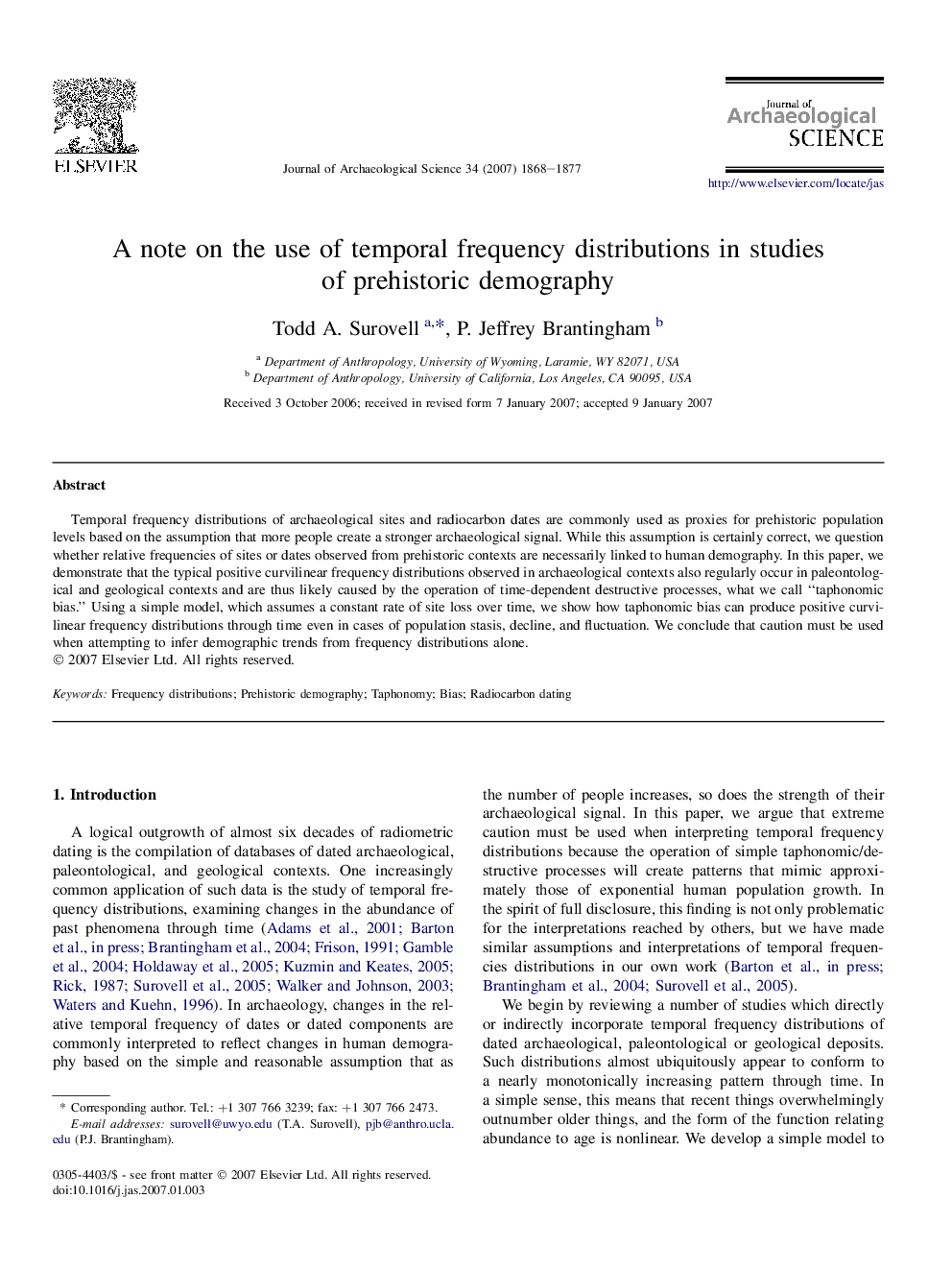| Article ID | Journal | Published Year | Pages | File Type |
|---|---|---|---|---|
| 1037610 | Journal of Archaeological Science | 2007 | 10 Pages |
Temporal frequency distributions of archaeological sites and radiocarbon dates are commonly used as proxies for prehistoric population levels based on the assumption that more people create a stronger archaeological signal. While this assumption is certainly correct, we question whether relative frequencies of sites or dates observed from prehistoric contexts are necessarily linked to human demography. In this paper, we demonstrate that the typical positive curvilinear frequency distributions observed in archaeological contexts also regularly occur in paleontological and geological contexts and are thus likely caused by the operation of time-dependent destructive processes, what we call “taphonomic bias.” Using a simple model, which assumes a constant rate of site loss over time, we show how taphonomic bias can produce positive curvilinear frequency distributions through time even in cases of population stasis, decline, and fluctuation. We conclude that caution must be used when attempting to infer demographic trends from frequency distributions alone.
